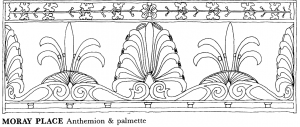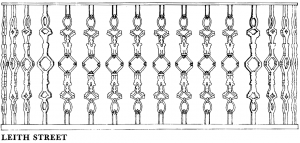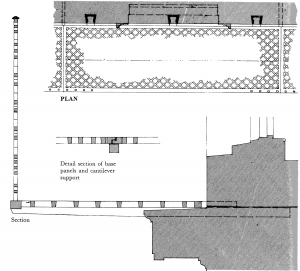Why this is important
 Balconies are a very important feature of Georgian designs, and add to the overall character of a historic area, and are extremely important in Hamilton Square and surrounding area.
Balconies are a very important feature of Georgian designs, and add to the overall character of a historic area, and are extremely important in Hamilton Square and surrounding area.
It is important that these are well maintained as they provide a key embellishment of the building, and hence, the value of the property.
Being made of cast or wrought iron, they also need careful maintenance to protect them from rust. Because of the loads they may carry, it is particularly important that balconies be securely fixed to sound stonework, and treated against rust.
What to look for
Balconies, usually fitted to drawing-room windows on the first floor, contribute greatly to the decorative quality of Georgian facades. There are four basic types:

 A long balcony running the length of a house or street (e.g in Hamilton Square);
A long balcony running the length of a house or street (e.g in Hamilton Square);- A curved or rectangular balcony, the width of an individual window (e.g. in Hamilton Street);
- A shallow guard, the width of an individual window, often found on rear elevations and at nursery windows on upper floors;

 Each type can be found in a variety of different patterns, but there are common patterns for Birkenhead, which should be used when replacing balconies.
Each type can be found in a variety of different patterns, but there are common patterns for Birkenhead, which should be used when replacing balconies.
Balconies usually rest on the projecting string course at first-floor level, being fixed to the stonework with lugs which form part of the floor grid, staved into undercut holes.
In some cases, a heavier balcony is supported on a bracket of cast or wrought iron of various designs. The base and wrought-iron coping rail of the balcony itself are usually built into the wall.
Balconies running the length of a street are tied back to the stonework with wrought- or cast-iron bars at the party walls; these ties sometimes take the form of decorative cast-iron panels fixed across the balcony to separate adjoining houses.
Mostly the bracket is wrought-iron, fixed at top with lug set in lead, fixed at bottom by bolts grouted into masonry.
When to look
All ironwork should be inspected annually for any signs of breakdown and decay.
All ironwork will need repainting:
- at the first signs of rust
- about once every five years. South or West facing exposures may need repainting more frequently.
Re-painting should using the principles of thorough painting. See Repainting Balconies for more information.
Specific Problems to look for

 Cast iron is particularly brittle and will readily fracture if subjected to tensile stresses or if the section is significantly reduced by corrosion.
Cast iron is particularly brittle and will readily fracture if subjected to tensile stresses or if the section is significantly reduced by corrosion.
The grid floor panels of continuous balconies need to accommodate a certain degree of thermal and structural movement; welding in situ can restrict movement and cause further cracks.
Water penetration may occur if fixings have been realigned on the wall face, leaving sinkings in the stonework. These should be made good with a mortar repair.
How to fix problems
Covered in detail on separate pages.
Avoiding creating problems
- Merely painting over rust will not stop the metal continuing to rust.
- Avoid water-based primers
- Avoid “Universal” primers (they tend to do nothing very well)
- Avoid one-coat-wonder paints
